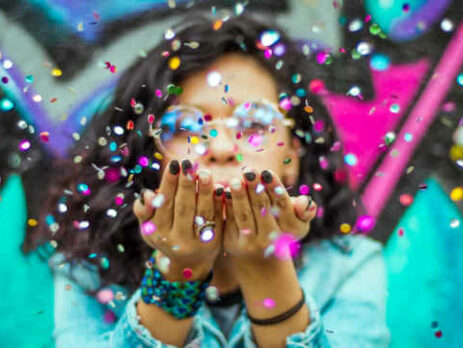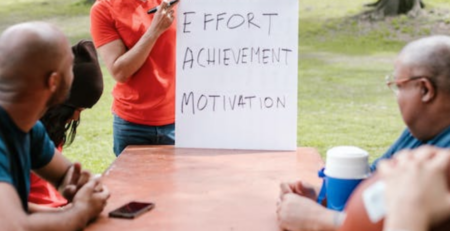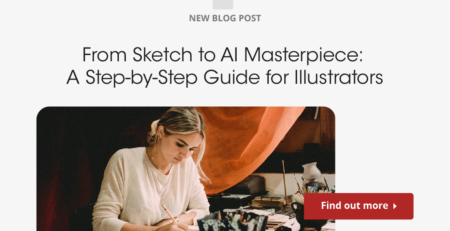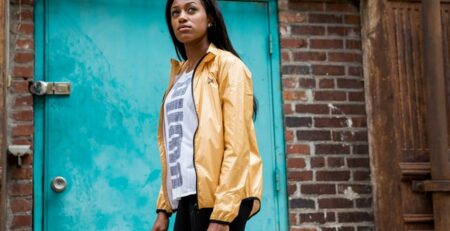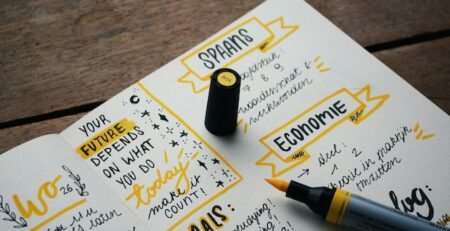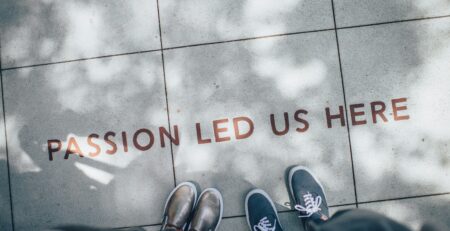New Year’s Resolutions for Creatives in 2021
With a critical eye at the year that passed, creatives can set professional goals that will keep them active, searching, and imaginitive in the year to come. New Year’s is a great time to take this retrospective view, although setting goals can be done at any time throughout the year.
Planning for the year ahead helps concentrate creative energy and builds a metric that can be used to see how far you’ve developed or give you direction during creative droughts. There are many ways creatives can use New Year’s Resolutions to outline the immediate future, but it all starts with an honest reckoning of the current situation.
Read on for some creative New Year’s Resolutions and some tips for how you can critique the old year in order to set challenging professional goals for the new one.
Resolutions Rule #1: Think Outside the Box
Many popular New Year’s Resolutions are the same year after year. We all know the most common ones: lose weight, go to the gym more, put more effort into hobbies, and things like that. They vary from person to person but they’re usually about health, happiness, or family.
On occasion you might find people with a specific goal, like saving up a certain amount of money for some reason or finally getting back to the Spanish they started learning in high school.
We can’t say that these aren’t worthy goals, but if you find yourself making the same or similar goals every year, that might be an indication that you haven’t been making significant progress so far. That can get pretty discouraging after a while, but creative New Year’s Resolutions can help you stay motivated and accomplish whatever it is that you set out to do.
Resolutions Rule #2: Don’t Be Too General
Everybody wants to eat healthier, be nicer, or get out more. But the thing about these types of resolutions is that they’re so broad that they’re impossible to keep track of throughout the year. Let’s say it’s the middle of June – can you remember how nice or healthy you were every single day?
It’s much better to set a more specific goal and, if necessary, to keep a journa of how well you’re doing. With the health example, maybe you should keep a food journal. A diary might help you keep track of how kind you’ve been or how often you’ve gone out.
Indulge In the What-If’s
As you take a look back on the past year, take the time to imagine what could have gone differently, even with the things you consider a success. This will help you think outside the box and create professional goals that are specific to you.
Let’s say you’re a UX designer and you created several designs that outshone the competition and you’re really proud of them. Look back through your notes and project files and try to remember what did or didn’t work. Imagine what could have gone differently – not just in a bad way, but imagine something outlandish that might have happened.
From these possibilities, maybe you can come up with a more concrete goal. Maybe you’d like to branch out into different kinds of user research or get away from a certain design style you’ve been over-reliant on recently. Either of these goals is more practicable and acheivable than a broad, routine one.

Resolutions Rule #3: Set a Target
Hand-in-hand with the specificity rule, setting a target will give you a real, attainable professional goal. The last thing you want is to find yourself next New Year’s Eve wondering whether you succeeded at your old resolutions or not. The only definite way to know is to give yourself a reachable target.
The target you set might be more or less specific depending on what your particular goal is. For example, if you want to try and branch out into new areas of your profession, you might set a target to get hired or promoted into a new role.
If you have a general goal, to be more creative, for instance, you could set a target to get through X number of projects using a brand new style you haven’t used before. Or, you could dedicate yourself to reading at least 30 minutes of new design thinking each day to help you think up more creative ideas.
Resolutions Rule #4: Critique Your Past Year
The best way to find resolutions that apply specifically to you is to closely reconsider what they last year or two has been like for you. You don’t have to go back in time and dwell on mistakes, but it will be very helpful to remember times when you had a creative block, learned something new, or went through big changes.
These relative upheavals reveal times when you were likely pushed into some of your best creative moments. If they weren’t, they might at least reveal some room for improvement.
Resolutions Rule #5: Talk It Over
Whether you’re close enough with coworkers or have to turn to personal friends, discussing your resolutions is a great way to workshop them. Everyone will benefit and you can also turn this into an ad hoc support group, or at least a way to check in throughout the year and see how everyone is coming along with their resolutions.
People might also be able to think of more examples from the past year and help you tailor your resolutions into attainable professional goals that will make a huge difference in your life and help you stay inspired and at our creative best.
Keep Good Records Throughout the Year
Coming up with creative New Year’s Resolutions often seems so difficult because we have to look back on tons of information from the past year with little or no resources to remind us what happened an when. Creatives especially are likely to miss smaller events such as prototypes or ideas that didn’t make it into the final product.
Taking the time to write down major events is a great way to build a reminder for yourself that you can take a look at when the year is over. A full-fledged scrapbook or diary isn’t necessary, although the more information you have about how you felt at crucial moments, the easier setting tailored goals will be.
If you haven’t tried this method before, consider setting out to do so as one of your resolutions for the coming year. Remember, it doesn’t have to be incredibly detailed. You can even keep a brief timeline of the year and keep adding to it, so long as it has enough information to help you set meaningful goals.
8 Best Creative New Year’s Resolutions
Popular New Year’s Resolutions might be general or personal, but creative New Year’s Resolutions can be a bit more unique, personalized, and specific. Here are a few of the best ones that will build your creative skillset next year:
1- Spend Less Time On The Computer
This has got to be one of the most popular New Year’s Resolutions at the end of 2020. With the huge increase in remote work and streaming services, many people have been living their professional and personal lives through a computer screen.
Step away from the computer screen and enjoy things like books, music, and activities done by hand like cooking, crafts, or small building projects. Creative burnout is a huge threat and staring at a screen for all your waking hours is a great way to zap your brain.
To make this a more actionable a measurable goal, aim to spend a certain amount of hours per day or week completely unplugged. Don’t let that smartphone sabotage your efforts – set the ringer on for emergency contacts and leave it somewhere you can’t check it every other minute.
2- Find New Role Models
Creatives need to get a new perspective as often as they can. Even if you don’t adopt it completely, viewing a new kind of design or programming can inform your own craft and make it more versitile. Unless you’re a fanatic, there’s likely to be tons of creatives in your field who you’re unaware of.
These creatives may not be from your country, but there are tons of books, podcasts, and websites that will help broaden your horizons. If you go into with the goal of more exposure and not radically changing your own style, even products you hate can be instructive.
You might burn out on a role model if you try to study them for a whole year. Instead, try to pick a new person, firm, or product line to study each month. That way, you’ll be sure to get a mixed bag and tons of new information by the end of the year.
3- Make a Lateral Move
Tons of creatives have made a move from one field to another. Moving from graphic design to product design, for example, takes a particular amount of skillbuilding and reframing the way you think about design.
Setting a professional goal to move into an area of the creative industry that interests you is one of the greatest creative New Year’s Resolutions because it affords you more time to make the change.
Break this process down into stages and set a course for yourself throughout the year. This is a great example of how talking over your resolutions can help you organize them. Find people who have made the same or a similar lateral move and have them help you make a reasonable plan for the year ahead.
4- Try Something You Know Will Fail
While we don’t recommend trying this at the office, you might try it on a personal project or create an iteration of a product that you know won’t work on your own time. While this isn’t one of the most popular New Year’s Resolutions, it’s a great one for creatives because it allows space for complete freedom.
If you know something is bound to fail from the start, you’ll not only be able to take risks but you’ll also be thinking along avenues that you might not get to tread very often. Plus, you won’t spend tons of time perfecting a personal project if you know it won’t come out to much in the end.
Even if you guessed correctly and it doesn’t work, you’ll still have learned a ton about freehand creative work. This is a great strategy for brainstorming, as well. If you want to turn this into a more measurable goal, try to purposefully fail at something a few times per year.
5- Explore Archaic Tools
This resolution ties into the first one in some ways but it will also fuel your creative mind in fantastic ways. Although remote work and the digitization of just about everything have led most creatives to primarily rely on digital tools, it’s refreshing and just plain fun to go back to some of the analog tools that were used before computers were so ubiquitous.
Although it might not be feasible at work when stakeholders are bearing down with deadlines and demands for deliverables, taking some personal time to tinker around with drawing by hand, painting, organizing layouts on paper, stenciling, and collage are all great ways to be creative and work with your hands.
Graphic designers, videographers, and programmers might not be able to go completely analog, but there are some ways to get a similar experience. Videographers might try flipbooks or, where possible, an old film camera. Programmers might try mods or pick up a book on old programming languages while graphic designers can dig up old magazines from online archives to find new examples of design.
6- Try New Mediums
That doesn’t just mean different aspects of your creative role. If you’re a content writer and spend a lot of time with words, carve out time each day or week to listen to music or look at some physical art in a gallery. Graphic designers who spend lots of time thinking about space can go listen to a live reading.
Where possible, a trip to see live music of almost any kind is perfect for getting your head completely away from your work. If you listen to lots of music already, you might try podcasts or a non-aural medium like photography. Crafts like stitching or puzzles are also a good option to switch gears.
7- Start Keeping a Journal
It can’t be stressed enough how much journaling can help creatives of all trades. If you’re a visual person, a sketchbook can help you keep track of ideas and also take your mind of whatever projects you have going at work. Writers can write whatever they please or keep record of ideas and samples that inspire them.
Even very technical creatives like UX/UI designers can benefit from jotting down ideas in a journal. If you have the right notebook, you can even take sample stickers and cards that you like and paste them inside.
In today’s world of filled bookmarks and downloads folders, keeping a short list of things you’d like to read later and marking them off as you do so is a great way to keep from getting overwhelemd.
8- Build a Better Mousetrap
Here’s a specific resolution that’s great for prompting creative thinking. Take something you already know you can do, a particular part of your creative job, and find a way to do it better. It will depend on the nature of the thing how you’ll define what better looks like.
Don’t get too general or you’ll never be able to be sure if you acheived this goal. UX designers might, for example, set a goal to make better personas. Give yourself time to explore new ideas, test them out, and then implement.
If you can handle it, this can be a monthly or seasonal goal. Alternatively, you can aim for a bigger target and give yourself the whole year to put it into practice.

Conclusion:
Most popular New Year’s Resolutions sound nice but they’re impossible to measure, which is why so many people have given up on them before spring even begins. Creatives can set specific and actionable resolutions to help them stay creative and imaginative throughout the year, all while meeting professional goals as well.
Try some of the tips and sample creative New year’s Resolutions in this guide to give yourself some fun projects that will keep you motivated and producing your best work for the year. Even if you don’t make resolutions at the end of the year, it’s never to late to start!

